
Unexpected 'Zig-Zag' Structures Discovered in Earth's Magnetic Field Science Alert - November 24, 2025

A strange phenomenon thought to only exist near the Sun has been detected in Earth's magnetic field for the first time. The discovery could help scientists forecast the impact of geomagnetic storms more accurately.
Two Strange Giant 'Blobs' Deep Inside Earth May Finally Be Explained Science Alert - November 22, 2025

One of the strangest mysteries about our Earth is the presence of two dense, giant blobs inexplicably clustered above the planet's core. Now, new models might reveal where they have come from, and it's neither of the expected origin stories. Rather, some material may have oozed from a leaking core when Earth was newly formed eons ago, and mixed with the mantle to create the so-called large low-shear-velocity provinces (LLSVPs) we see today.
MIT scientists have uncovered chemical traces of the original "proto Earth" - remnants from before the cataclysmic impact that created our modern planet Science Daily - October 16, 2025
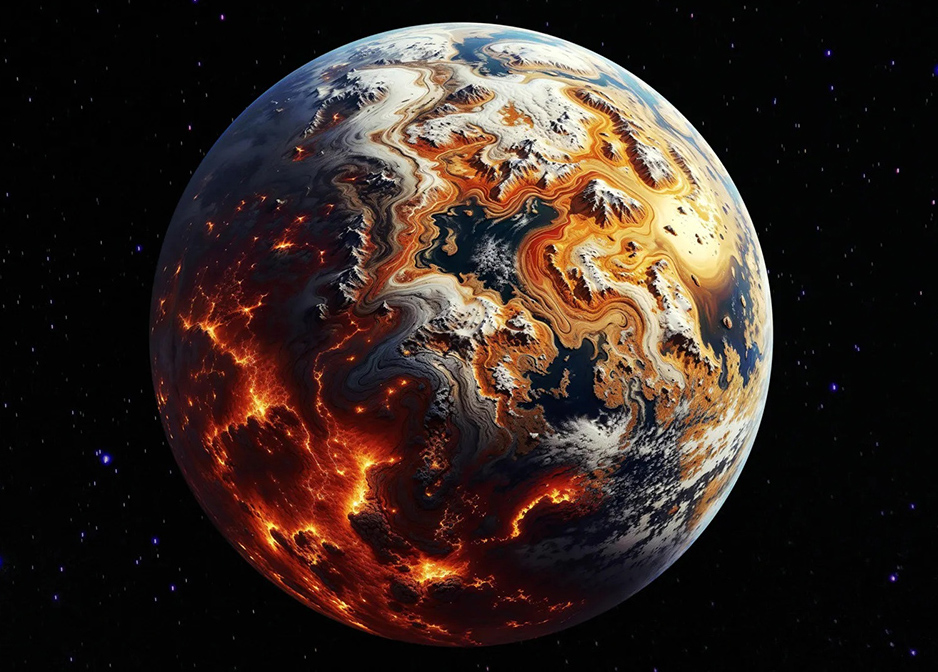
Hidden deep beneath our feet, traces of Earth’s first incarnation still endure - untouched since before the world we know was born.
A Surprising Mathematical Pattern Was Found Hiding in Earth's History Science Alert - September 2, 2025

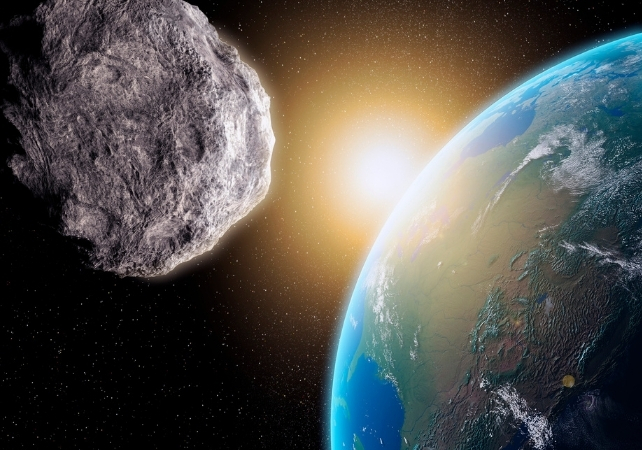
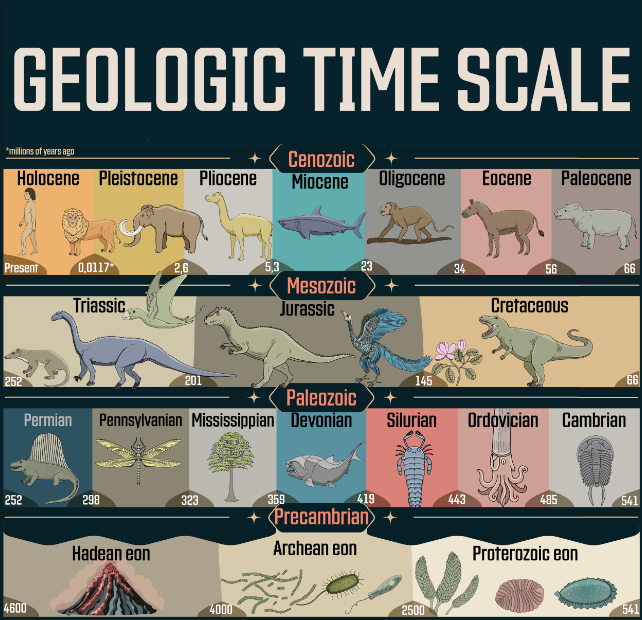
According to a recent study, events geologists use to distinguish transitions between geological chapters in Earth's story follow a hidden hierarchical pattern, one that could shed light on both past and future tumult. Geological time scales may look like tidy timelines in textbooks, but their boundaries tell a much more chaotic story
Earth will spin faster to create 2nd-shortest day in history Space.com - July 22, 2025

The difference will be just 1.34 milliseconds less than the standard 24 hours - not something you'll notice - but it's part of a puzzling trend in Earth's rotational behavior that has been unfolding in recent years. If it continues, a second may need to be subtracted from atomic clocks around 2029 - a so-called negative leap second, which has never been done before.
Earth is spinning faster this summer, leading astronomers to notice that some days have clocked in at slightly less than the standard 24 hours CNN - July 22, 2025

Earth is spinning faster this summer, making the days marginally shorter and attracting the attention of scientists and timekeepers. Earth is spinning faster this summer, making the days marginally shorter and attracting the attention of scientists and timekeepers. As a result, a full rotation usually takes slightly less or slightly more than 86,400 seconds - a discrepancy of just milliseconds that doesn’t have any obvious effect on everyday life. However these discrepancies can, in the long run, affect computers, satellites and telecommunications, which is why even the smallest time deviations are tracked using atomic clocks, which were introduced in 1955. Some experts believe this could lead to a scenario similar to the Y2K problem, which threatened to bring modern civilization to a halt. Atomic clocks count the oscillations of atoms held in a vacuum chamber within the clock itself to calculate 24 hours to the utmost degree of precision. We call the resulting time UTC, or Coordinated Universal Time, which is based on around 450 atomic clocks and is the global standard for timekeeping, as well as the time to which all our phones and computers are set.
Solid Rock Caught Flowing 1,700 Miles Beneath Surface in Experimental First Science Alert - June 17, 2025
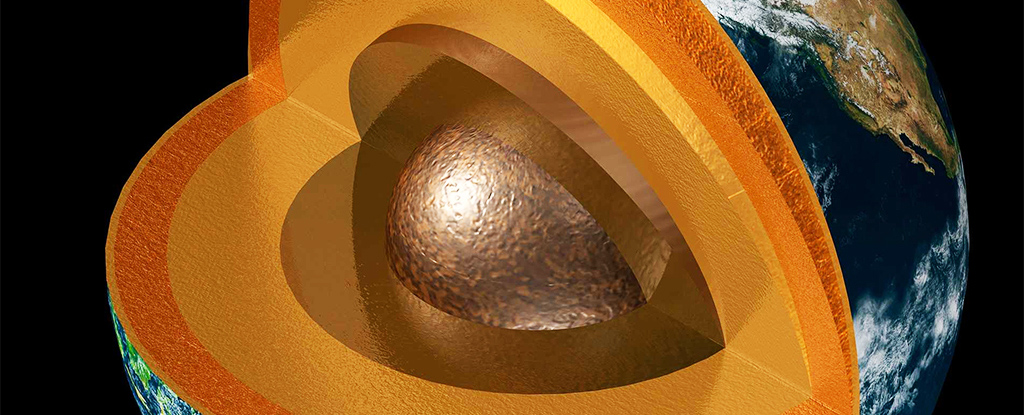
The D" layer, some 2,700 kilometers (nearly 1,700 miles) below our feet, has been mystifying scientists for decades. Now we may have an answer as to what exactly goes on in this special zone deep inside Earth - solid rock is flowing.
Earth's Core Is Changing: Little-Known Phenomenon Is Creating a Mysterious New Layer Science Alert - November 20, 2023

Water from Earth's surface can find its way deep into the planet, and new research explains how it changes the outermost region of the metallic liquid core. The finding could explain the presence of a thin layer of material inside the planet that has mystified geologists for decades. Earth's crust is composed of tectonic plates that grind and slide under each other; over billions of years, these subduction zones have transported water to the lower mantle.
Earth's Core Appears to Be Wrapped in an Ancient Unexpected Structure Science Alert - September 8, 2023
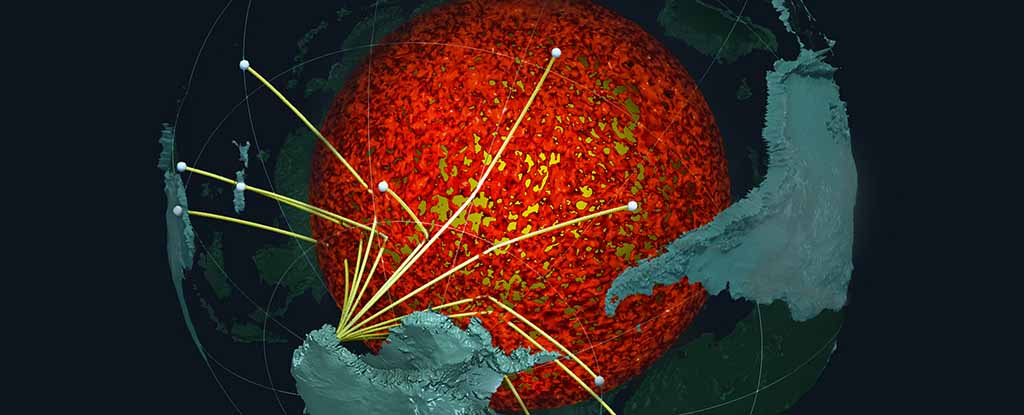
The most high-resolution map yet of the underlying geology beneath Earth's Southern Hemisphere reveals something we previously never knew about: an ancient ocean floor that may wrap around the core.
99 Percent Of Earth's Gold Is In Its Core IFL Science - August 22, 2023

Right now, you're standing on a goldmine. There's so much gold on Earth you could cover every bit of land on the planet in it to a depth of 50 centimeters (20 inches), according to one calculation. So why is gold so rare that it's a byword for preciousness? Because almost all of it has sunk to the planet's core, beyond the reach of even the most ambitious miner.
Physicists Just Synthesized Crystals Of The Material We Think Is in Earth's Core Science Alert - August 19, 2023

Physicists have successfully squeezed iron into the form we think it has deep in the center of Earth. It's called hexaferrum, or epsilon iron and is only stable at extremely high pressures. Scientists think the majority of the iron in Earth's core takes this form, and a detailed understanding of its properties could help us understand why the very center of our planet seems to have directional variations in its texture - a property known as anisotropy.
Scientists Found Two Gigantic Structures Deep Within The Earth. They Could Be The Remains Of An Ancient Planet IFL Science - June 7, 2023
Lying beneath Africa and the Pacific in the lowermost part of the Earth's mantle, surrounding the Earth's core, there are two gigantic blobs that occupy around three to nine percent of the volume of the Earth.
Earth's Core Appears to Be Wrapped in an Unexpected Ancient Structure - an Ancient Ocean Floor Science Alert - April 11, 2023
Scientists have stitched together the most high-resolution map yet of the underlying geology beneath Earth's Southern Hemisphere, revealing something previously undiscovered: an ancient ocean floor that may wrap around the core.
After a 20-Year Search, Scientists Have Finally Found Earth's True Innermost Core Science Alert - February 22, 2023
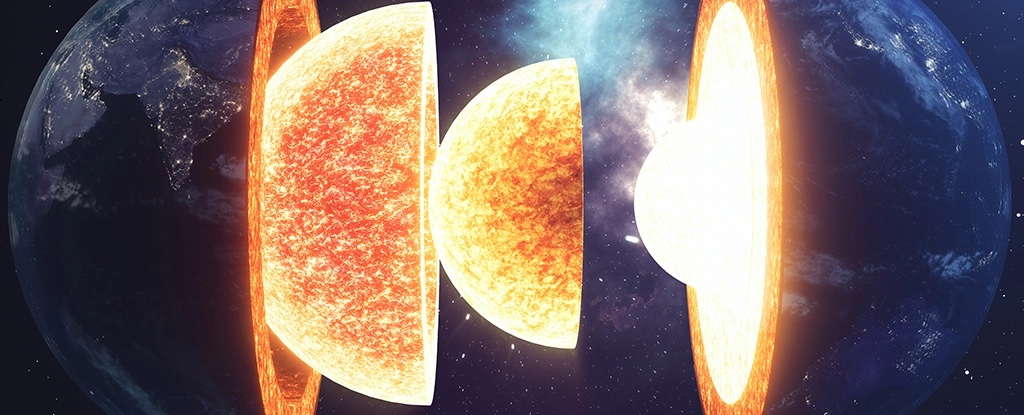
A new analysis of Earth's innards suggests the presence of an inner core within the inner core - a dense ball of iron at the very center of our planet.
Scientists Detect Signs of Hidden Structure Inside Earth's Core
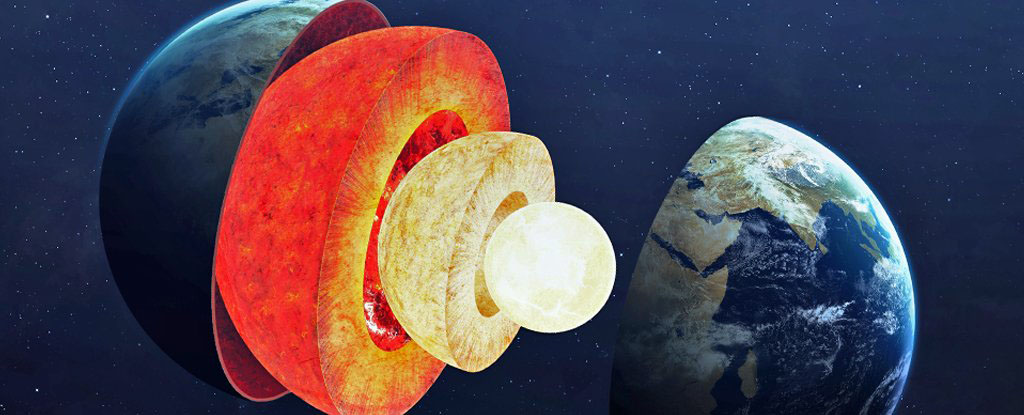
Earth's mantle has a gooey layer we never knew about Live Science - February 10, 2023
Hidden Layers of Melting Rock Found Lurking Beneath Earth's Crust Science Alert - February 9, 2023
Magma observed taking an unexpected route beneath volcanoes PhysOrg - February 10, 2023
Earth's inner core may have stopped turning and could go into reverse, study suggests CNN - January 25, 2023
Earth's Inner Core May Right Now Be in The Process of Changing Direction. It's not the first time record of such an event. It's not even the first in recent history Science Alert - January 25, 2023
Earth's inner core may have stopped turning and could go into reverse, study suggests CNN - January 25, 2023
Giant Magnetic Waves Have Been Discovered Oscillating Around Earth's Core Science Alert - May 25, 2022
Scientists studying satellite data of Earth have identified something inside Earth we've never seen before: a new type of magnetic wave that sweeps around the surface of our planet's core, every seven years. This discovery could offer insight into how Earth's magnetic field is generated, and provide clues of our planet's thermal history and evolution - that is, the gradual cooling of the planetary interior.
Wind from Earth's middle layer blows through a secret passage beneath Panama Live Science - December 18, 2021
Researchers just discovered a geological hidden passageway. A geological secret passage beneath Panama may explain why rocks from Earth's mantle are found more than 1,000 miles (1,609 kilometers) from where they originated. This opening, located some 62 miles (100 km) below Earth's surface, may allow a flow of mantle materials to travel all the way from beneath the Galapagos Islands to beneath Panama. This never-before-discovered form of transport may also help explain why Panama has very few active volcanoes.
'New hidden world' discovered in Earth's inner core Live Science - October 27, 2021
Earth's "solid" inner core might actually be a bit mushy, researchers now find. For over half a century, the scientific community thought that Earth's inner core was a solid ball of compressed iron alloy surrounded by a liquid outer core. But new research suggests that the firmness of the planetary ball ranges from hard to semisoft to liquid metal.
Hunks of oceanic crust are wedged inside Earth's mantle Live Science - June 9, 2021
Earth's middle layer is chunky, like peanuts in a sea of caramel.
Scientists Detect Signs of a Hidden Structure Inside Earth's Core Science Alert - March 5, 2021
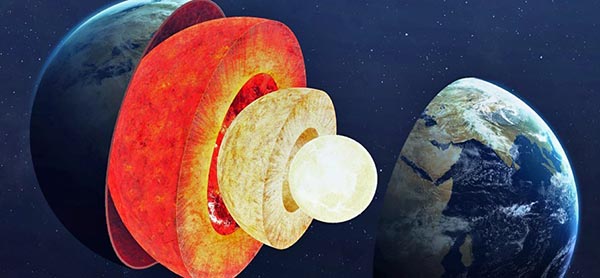
Now researchers have found more evidence for a whole new chapter deep within Earth's past - Earth's inner core appears to have another even more inner core within it.
Scientists detect unexpected widespread structures near Earth's core PhysOrg - June 11, 2020
University of Maryland geophysicists analyzed thousands of recordings of seismic waves, sound waves traveling through the Earth, to identify echoes from the boundary between Earth's molten core and the solid mantle layer above it. The echoes revealed more widespread, heterogenous structures areas of unusually dense, hot rock - at the core-mantle boundary than previously known. Scientists are unsure of the composition of these structures, and previous studies have provided only a limited view of them. Better understanding their shape and extent can help reveal the geologic processes happening deep inside Earth. This knowledge may provide clues to the workings of plate tectonics and the evolution of our planet. The new research provides the first comprehensive view of the core-mantle boundary over a wide area with such detailed resolution.
Superdeep diamonds confirm ancient reservoir deep under Earth's surface PhysOrg - August 15, 2019
Analyses show that gases found in microscopic inclusions in diamonds come from a stable subterranean reservoir at least as old as the Moon, hidden more than 410 km below sea level in the Earth's mantle.
Ancient crystals offer evidence of the start of Earth's core solidifying PhysOrg - January 29, 2019
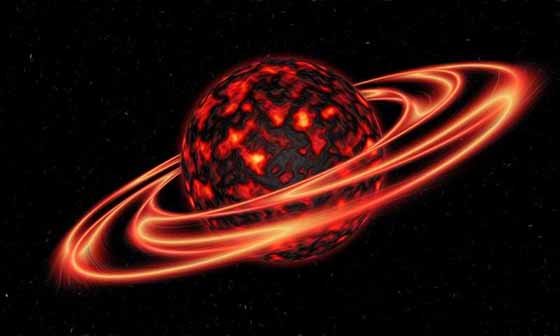
Planetary scientists have found strong evidence that suggests the Earth has an inner and an outer core. The inner core is believed to be solid, while the outer core is made up of molten material. Prior evidence has also indicated that the entire core was once liquid, but as the interior cooled, the innermost part began to crystallize. It is at this point that scientists disagree - some suggest the start of solidification began as far back as 2.5 billion years ago. Others believe it was much more recent - perhaps as recent as just 500 million years ago. In this new effort, the researchers have found evidence that supports the latter theory.
Researchers confirm Earth's inner core is solid but softer than previously thought PhysOrg - October 19, 2018
New candidate for 'missing element' in Earth's core BBC - January 10, 2017
Japanese scientists believe they have established the identity of a "missing element" within the Earth's core. They have been searching for the element for decades, believing it makes up a significant proportion of our planet's centre, after iron and nickel. By recreating the high temperatures and pressures found in the deep interior, experiments suggest the most likely candidate is silicon. The discovery could help us to better understand how our world formed.
Iron 'jet stream' detected in Earth's outer core BBC - December 19, 2016
Scientists say they have identified a remarkable new feature in Earth's molten outer core. They describe it as a kind of "jet stream" - a fast-flowing river of liquid iron that is surging westwards under Alaska and Siberia. The moving mass of metal has been inferred from measurements made by Europe's Swarm satellites. This trio of spacecraft are currently mapping Earth's magnetic field to try to understand its fundamental workings. The scientists say the jet is the best explanation for the patches of concentrated field strength that the satellites observe in the northern hemisphere.
Molten 'Jet Stream' Discovered Deep Inside Earth Live Science - December 19, 2016
A band of molten iron is churning slowly deep inside Earth, much in the same way as a jet stream, a new study finds. Scientists discovered the so-called molten jet stream while analyzing data from a trio of European satellites, called Swarm. The satellites launched in 2013 with the goal of studying Earth's magnetic field. In this case, Swarm's observations helped create a view akin to an X-ray of the planet, the researchers said.
Mysterious Radiation Belts Detected Around Earth After Epic Solar Storm Science Alert - February 10, 2025

When scientists investigated the effects of the solar storm of May 2024 based on data collected by the NASA's Colorado Inner Radiation Belt Experiment CubeSat, what they saw surprised them. There, sandwiched between the two Van Allen radiation belts, they found two new belts - one predominantly comprising electrons, as we've seen previously, and the other containing energetic protons, which has never been seen before.
Earth's Magnetic North Pole Officially Has A New Position IFL Science - December 20, 2024
Hoping to keep tabs on the magnetic north's wandering ways, the World Magnetic Model 2025 has been released this week, revealing the latest official predicted placement of Earth's magnetic fields. This version will remain valid until late 2029, during which time we can expect to see the magnetic north pole slowly edge further toward Russia.
Two Giant Geological Blobs Lurk Under Africa And The Pacific, Still Defying Explanation IFL Science - November 29, 2024

Strange things are occurring beneath Earth's surface (as ever). Some 2,896 kilometers (1,800 miles) below the planet's crust, about halfway to the center of the Earth, two giant blobs can be found on roughly opposite sides of the planet. One is situated beneath Africa, while the other lives under the middle of the Pacific Ocean.
This Spring's Massive Aurora-Sparking Solar Storm Has Given Earth a New Van Allen Belt Looping Around The Planet IFL Science - August 19, 2024
Along with summoning beautiful aurora in the night sky around the world, the gusty solar storm that rocked Earth in May this year left another legacy: a new Van Allen Belt looping around the planet. The Van Allen belts are two donut-shaped belts of radiation wrapped around Earth, composed of energetic charged particles trapped in the planet's magnetic field. According to NASA, a temporary third belt has recently emerged around Earth as a result of the intense solar storms in May.
New studies, which utilized AI to monitor the effects of climate change on Earth's spin, have shown that our days are getting increasingly longer and that our planet will get more wobbly in the future Live Science - July 18, 2024

Earth's Days to Grow at an Unprecedented Rate as Polar Ice Melts Science Alert - July 17, 2024
Groundbreaking discovery: How researchers found remnants of Earth's primordial crust near Perth PhysOrg - June 21, 2024

Our planet was born around 4.5 billion years ago. To understand this mind-bendingly long history, we need to study rocks and the minerals they are made of. The oldest rocks in Australia, which are some of the oldest on Earth, are found in the Murchison district of Western Australia, 700 kilometers north of Perth. They have been dated at almost 4 billion years old.
Fountains of diamonds that erupt from Earth's center are revealing the lost history of supercontinents Live Science - January 15, 2024
Diamonds seem to reach Earth's surface in massive volcanic eruptions when supercontinents break up, and they form when continents come together.
Earth's Center Is 2 Years Younger Than Its Surface Because Of Time Dilation IFL Science - November 24, 2023
Earth's Center Is 2 Years Younger Than Its Surface Because Of Time Dilation
Night sky 'bleeds' over Arizona after SpaceX rocket punches a hole in the atmosphere. Here's why. Live Science - July 26, 2023
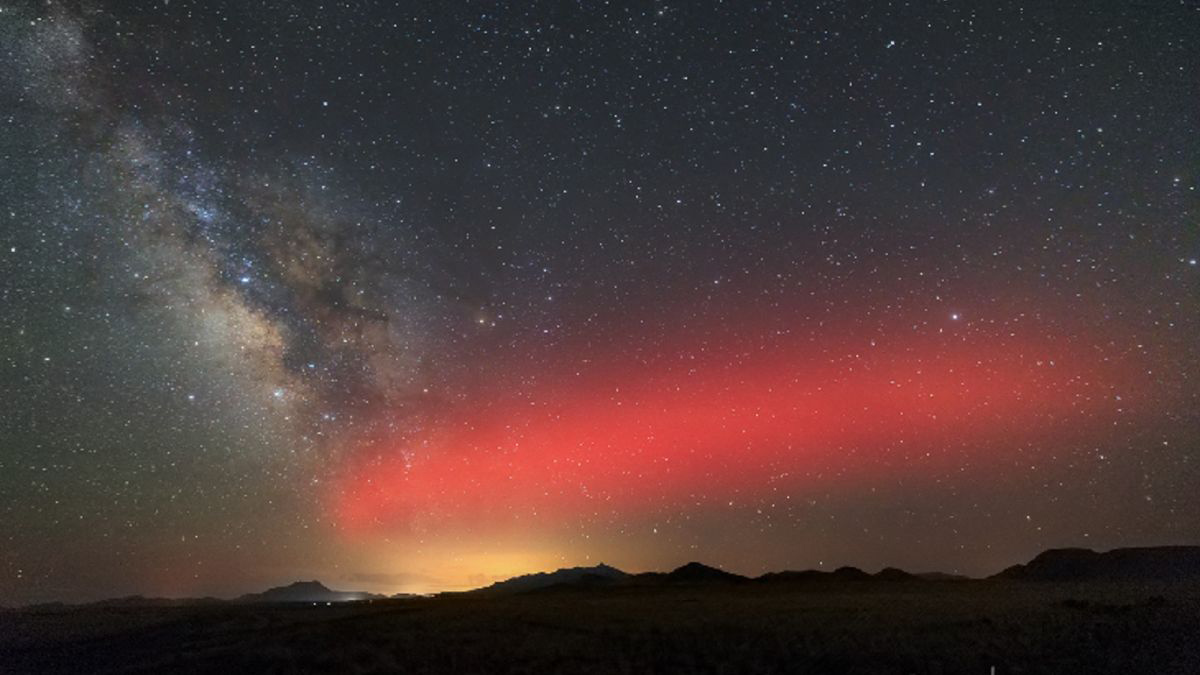
The recent launch of a SpaceX Falcon 9 rocket in California created a gap in Earth's ionosphere, which resulted in a blood-red glow across the sky visible for hundreds of miles.
Counter Earth: The Belief There Is Another Earth On The Other Side Of The Sun IFL Science - July 21, 2023

There is an idea, first proposed thousands of years ago by Greek philosopher Philolaus, that behind the Sun where we can't see it there lurks a "counter-Earth", named Antichthon.
Nuclear testing in the 1950s marked sediments at the bottom of a lake in Canada to such an extent that scientists are calling for it to become the symbol of a new geological epoch: the Anthropocene Live Science - July 17, 2023

Fallout from these tests snowed down from the atmosphere and became trapped in the earth as layers of sediment rich in a radioactive form of plutonium, called plutonium-239. Scientists argue that blankets of plutonium-239-rich sediment at the bottom of a small lake in Canada present the earliest tangible record of human activities shifting the balance of natural systems - which is why they're naming this potential new epoch "anthro" after humans.
Could Earth be inside a black hole? Live Science - June 18, 2023

There's one way Earth might have ended up in the belly of a black hole: It could have formed there. Various theories discussed.
The length of Earth's days has been mysteriously increasing, and scientists don't know why PhysOrg - August 5, 2022

Atomic clocks, combined with precise astronomical measurements, have revealed that the length of a day is suddenly getting longer, and scientists don't know why.
Earth is at the center of a 1,000-light-year-wide 'Swiss cheese' bubble carved out by supernovas Live Science - January 12, 2022
Earth is slap bang in the middle of a 1,000 light-year-wide bubble with a dense surface birthing thousands of baby stars. Researchers have long wondered what created this "superbubble." Now, a new study suggests that at least 15 powerful star explosions inflated this cosmic bubble.
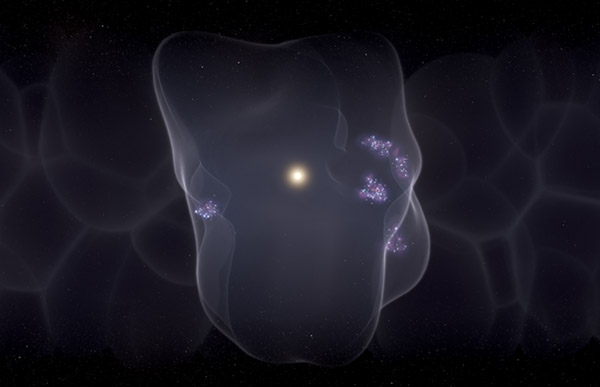
The Solar System Exists Inside a Giant, Mysterious Void, And We Finally Know Why Science Alert - January 12, 2022
The Solar System floats in the middle of a peculiarly empty region of space. This region of low-density, high-temperature plasma, about 1,000 light-years across, is surrounded by a shell of cooler, denser neutral gas and dust. It's called the Local Bubble, and precisely how and why it came to exist, with the Solar System floating in the middle, has been a challenge to explain.
Earth's spin has slowed. But we still may need a negative leap second Live Science - October 23, 2021
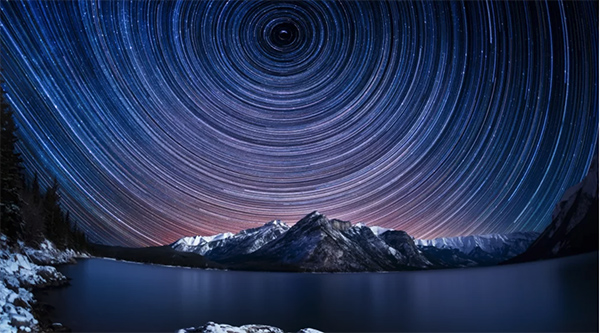
After speeding up during 2020, Earth's rotation has settled down. But timekeepers say we still may need a "negative leap second" in the next decade. On average, each Earth day contains 86,400 seconds. But Earth's rotation isn't perfect; it varies slightly all the time depending on the movement of the core, oceans and atmosphere. Universal Coordinated Time (UTC), the official international timekeeping method, is based on the atomic clock, which measures time by the movement of electrons in atoms that have been cooled to absolute zero. Atomic clocks are precise and invariable. So when Earth's rotation and the atomic clocks don't quite sync up, something has to give. When astronomical time, based on Earth's rotation, deviates from UTC by more than 0.4 seconds, UTC gets an adjustment in the form of a "leap second".
Earth may be trapped inside a giant magnetic tunnel Live Science - October 23, 2021

Our planet, along with the rest of the solar system and some nearby stars, may be trapped inside a giant magnetic tunnel - and astronomers don't know why. A tube of vast magnetized tendrils, 1,000 light-years long and invisible to the naked eye, may encircle the solar system, astronomers propose in a new paper.
Ice Melt at The Poles Is Now Causing Hidden Changes to Earth's Crust on a Huge Scale Science Alert - September 24, 2021
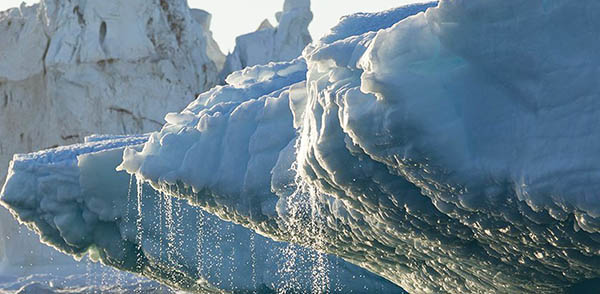
As the polar ice sheets melt, the process is not just raising sea levels - it's also warping the underlying surface of Earth, a new study reveals, and some of the effects can be seen across thousands of miles.
Hunks of oceanic crust are wedged inside Earth's mantle Live Science - June 9, 2021
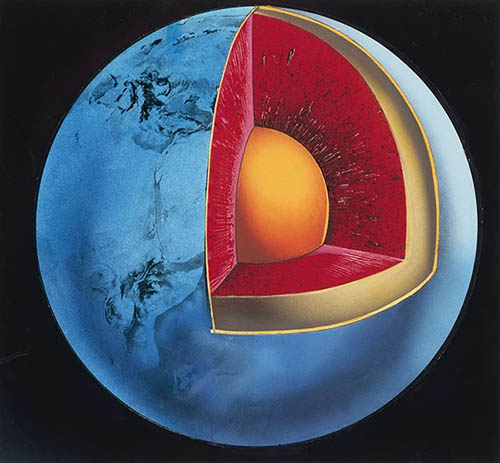
Earth's middle layer is chunky, like peanuts in a sea of caramel.
Earth's oldest minerals date onset of plate tectonics to 3.6 billion years ago PhysOrg - May 15, 2021
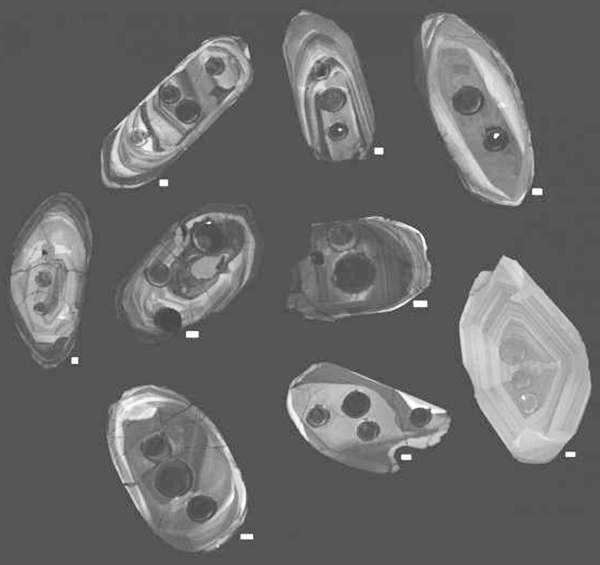
Earth is the only planet known to host complex life and that ability is partly predicated on another feature that makes the planet unique: plate tectonics. No other planetary bodies known to science have Earth's dynamic crust, which is split into continental plates that move, fracture and collide with each other over eons. Plate tectonics afford a connection between the chemical reactor of Earth's interior and its surface that has engineered the habitable planet people enjoy today, from the oxygen in the atmosphere to the concentrations of climate-regulating carbon dioxide. But when and how plate tectonics got started has remained mysterious, buried beneath billions of years of geologic time.
Gazing Into a Diamond's Flaws Has Revealed Hidden Clues About How Our Planet Formed Science Alert - May 15, 2021
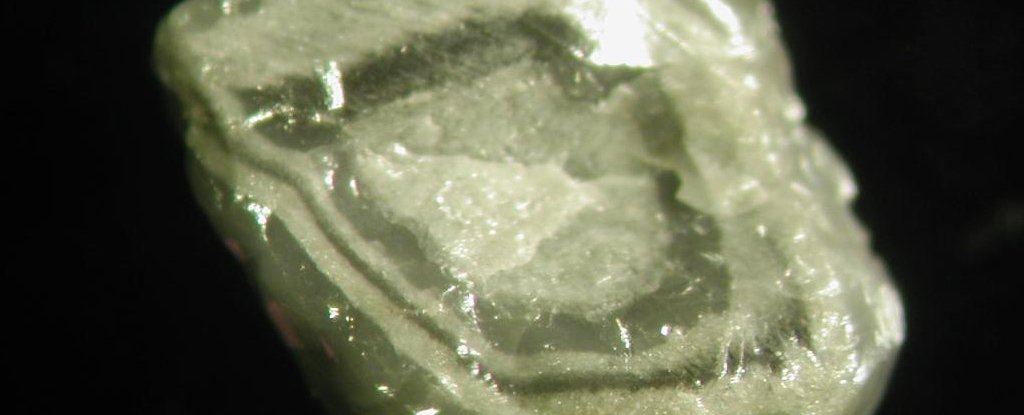
More than mere beautiful, coveted stones, diamonds hold another sort of wealth: fragments of Earth's deep history. From flaws within the mineral's near-perfect lattice, scientists have just worked out how to extract long-hidden records of our planet's past.
Rare 'Alien' Isotopes in Earth's Crust Point to Recent Brush With a Cataclysmic Event Science Alert - May 15, 2021

Far down in the periodic table you'll find a list of heavy elements born in chaos. The kind of chaos you might find in an exploding star perhaps, or a collision between two neutron stars.
Climate has shifted the axis of the Earth PhysOrg - April 23, 2021
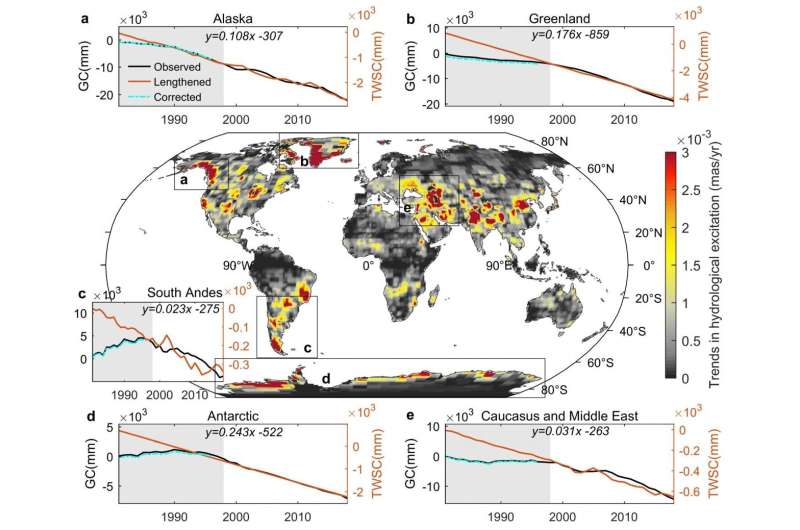
Glacial melting due to global warming is likely the cause of a shift in the movement of the poles that occurred in the 1990s.
For The First Time, A 'Space Hurricane' Has Been Detected Over The North Pole Science Alert - March 5, 2021
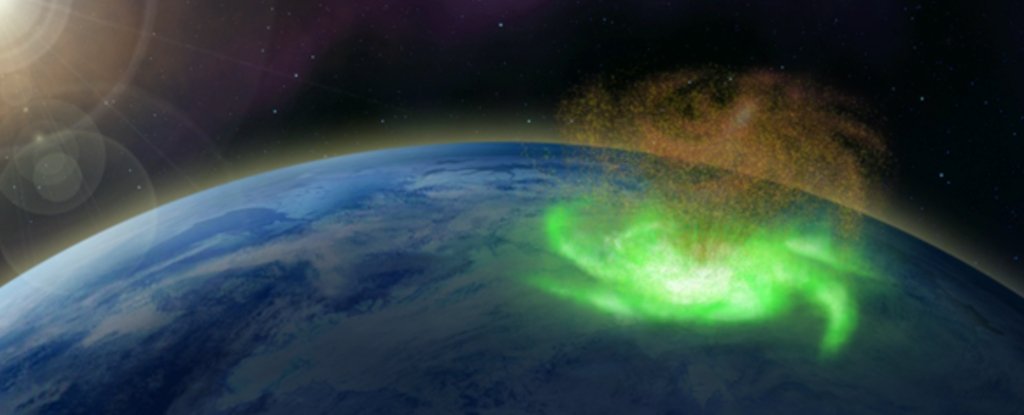
For the first time, a hurricane has been detected in Earth's upper atmosphere. In 2014, satellites recorded a huge flowing swirl of plasma extending high into the magnetosphere that lasted for hours before dispersing. Although we've never seen anything like this before, its detection suggests that space hurricanes, as they are known, could be a common planetary phenomenon.
The Gulf Stream is slowing to a 'tipping point' and could disappear Live Science - March 5, 2021
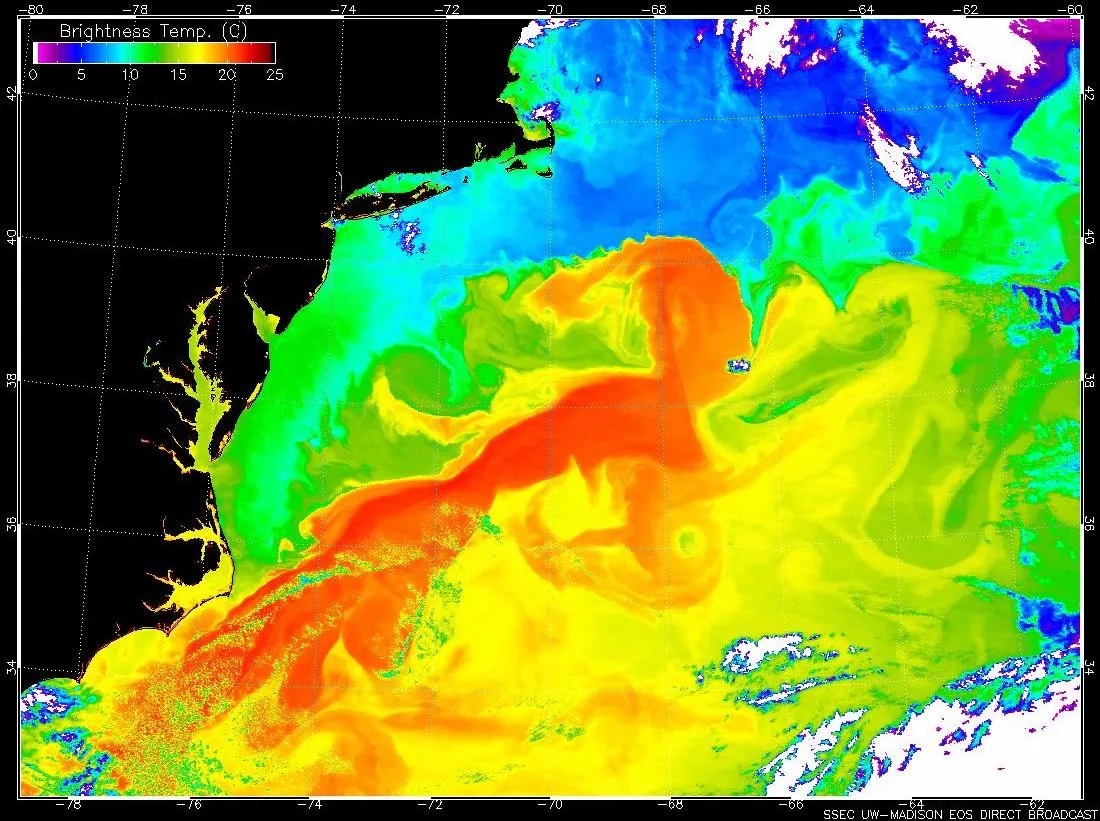
The current could slow down to a point of no return, altering the climate on both sides of the Atlantic.
A Long-Ago Lake Amid the Dunes Earth Observatory - March 3, 2021
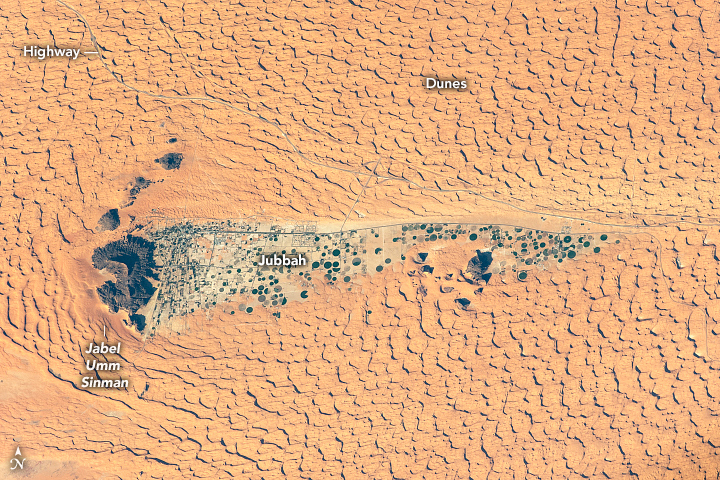
Long-sustained westerly winds shaped the dunes surrounding the Saudi Arabian oasis of Jubbah in this photograph shot by an astronaut from the International Space Station (ISS). Jubbah sits in the protective wind shadow of Jabel Umm Sinman, which roughly translates from Arabic as "two camel-hump mountain." The hard, black rock of the mountain disrupts wind flow and blocks dunes from forming on its lee side. The area around Jabel Umm Sinman has been at the center of significant climatic and anthropological shifts during the Holocene, a geologic term for the past 10,000 years.
Earth Was Spinning Faster Last Year Than at Any Other Time in The Past 50 Years Science Alert - January 8, 2021

The 28 fastest days on record (since 1960) all occurred in 2020, with Earth completing its revolutions around its axis milliseconds quicker than average.
Scientists discover distant 'mirror image' of the Earth and the sun Science Tech Daily - June 7, 2020
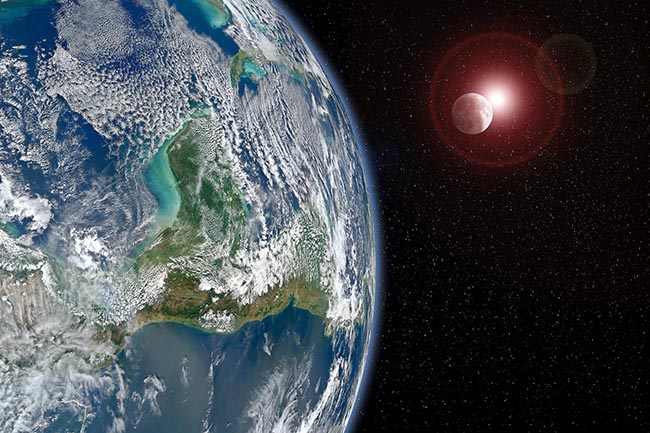
The star Kepler-160 and its companion KOI-456.04 are more reminiscent of the Sun-Earth system than any previously known exoplanet-star pair. Among the more than 4,000 known exoplanets, KOI-456.04 is something special: less than twice the size of Earth, it orbits a Sun-like star. And it does so with a star-planet distance that could permit planetary surface temperatures conducive to life.
Diamond samples in Canada reveal size of lost continent BBC - March 21, 2020
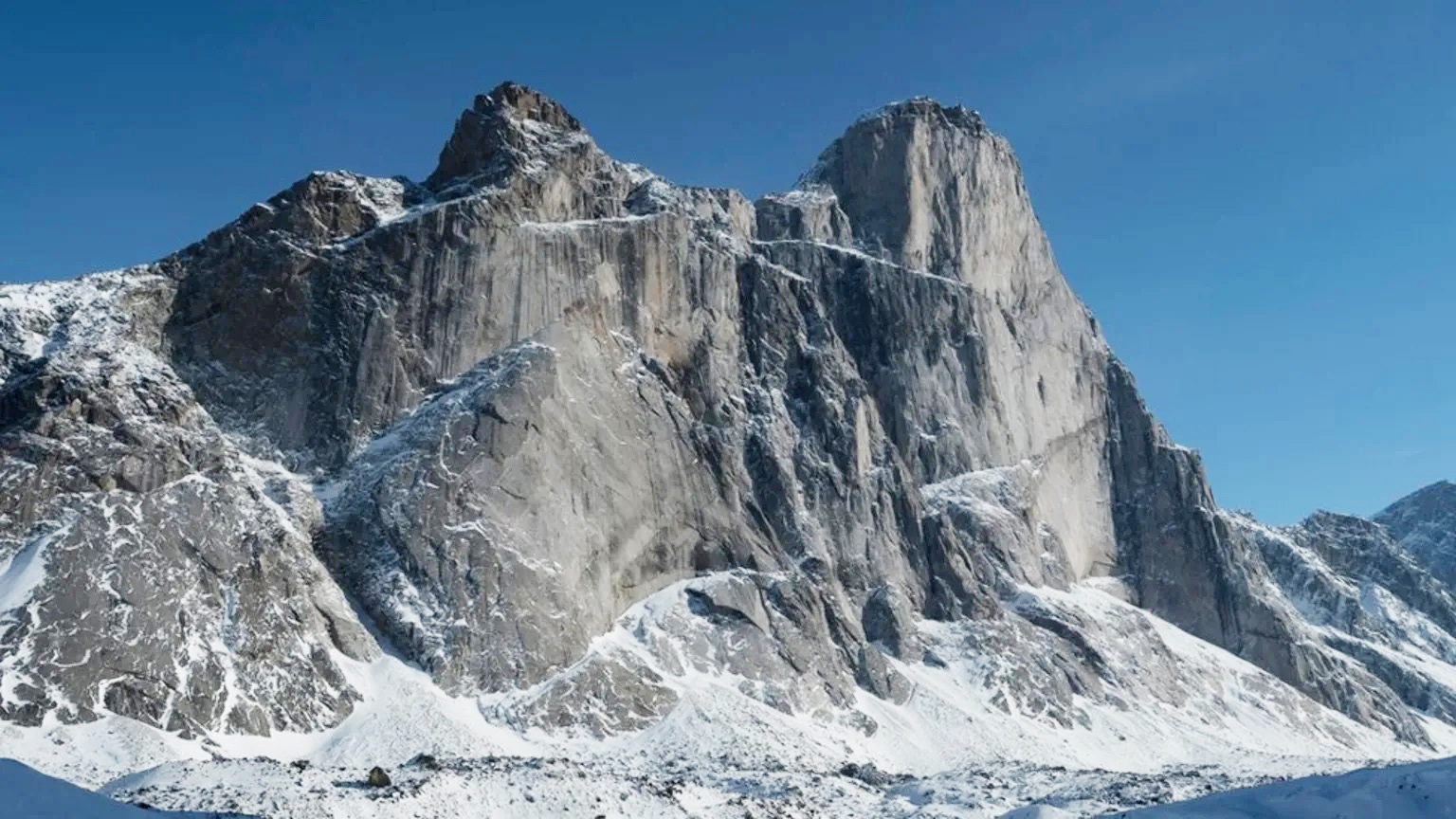
Canadian scientists have discovered a fragment of an ancient continent, suggesting that it was 10% larger than previously thought. They were studying diamond samples from Baffin Island, a glacier-covered land mass near Greenland, when they noticed a remnant of North Atlantic Craton. Cratons are ancient, stable parts of the Earth's continental crust. The North American Craton stretched from present-day Scotland to North America and broke apart 150m years ago. Scientists chanced on the latest evidence as they examined exploration samples of kimberlite, a rock that often contains diamonds, from Baffin Island.
Geologists find lost fragment of ancient continent in Canada's North PhysOrg - March 20, 2020
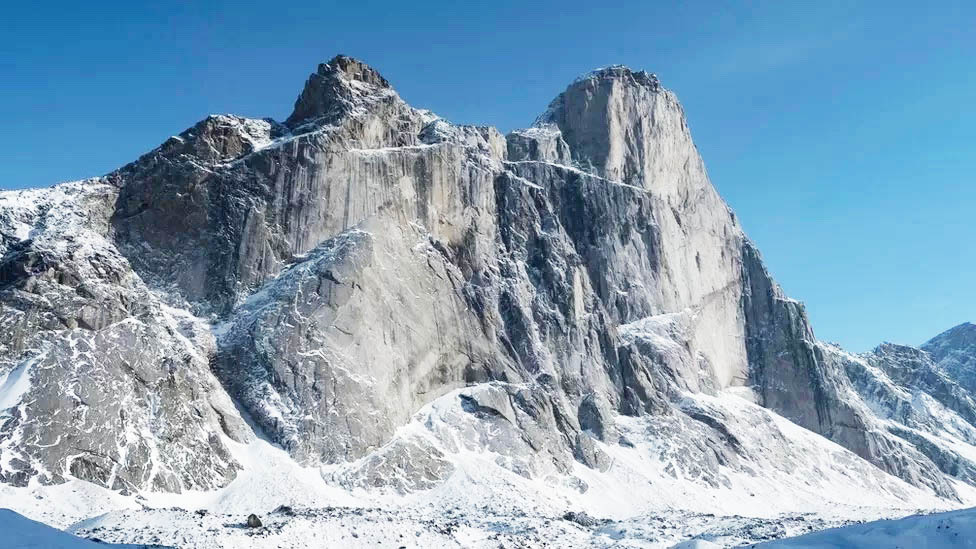
Sifting through diamond exploration samples from Baffin Island, Canadian scientists have identified a new remnant of the North Atlantic craton - an ancient part of Earth's continental crust. A chance discovery by geologists poring over diamond exploration samples has led to a major scientific payoff. Kimberlite rock samples are a mainstay of diamond exploration. Formed millions of years ago at depths of 150 to 400 kilometers, kimberlites are brought to the surface by geological and chemical forces. Sometimes, the igneous rocks carry diamonds embedded within them. The newly identified fragment covers the diamond bearing Chidliak kimberlite province in southern Baffin Island. It adds roughly 10 percent to the known expanse of the North Atlantic craton.
Off the Coast of Portugal, the Earth's Crust Might Be Peeling in Two Live Science - May 7, 2019
In 1969, a giant earthquake off the coast of Portugal kicked up a tsunami that killed over a dozen people. Some 200 years prior, an even larger earthquake hit the same area, killing around 100,000 people and destroying the city of Lisbon.Two earthquakes in the same spot over a couple hundred years is not cause for alarm. But what puzzled seismologists about these tremors was that they began in relatively flat beds of the ocean - away from any faults or cracks in the Earth's crust where tectonic plates slip past each other, releasing energy and causing earthquakes.
Earth's atmosphere stretches out to the moon - and beyond PhysOrg - February 20, 2019
The gaseous layer that wraps around Earth reaches up to 630,000 kilometers away, or 50 times the diameter of our planet Where our atmosphere merges into outer space, there is a cloud of hydrogen atoms called the geocorona. One of the spacecraft instruments, SWAN, used its sensitive sensors to trace the hydrogen signature and precisely detect how far the very outskirts of the geocorona are. These observations could be done only at certain times of the year, when the Earth and its geocorona came into view for SWAN. For planets with hydrogen in their exospheres, water vapor is often seen closer to their surface. That is the case for Earth, Mars and Venus.
Earth's lucky escape 565 million years ago: Study finds our planet's magnetic field was 'on the verge of collapse' Daily Mail - January 29, 2019
Earth narrowly avoided a catastrophic collapse of the magnetic field that protects our planet 565 million years ago, it has been revealed. Researchers say that it is had collapsed, life on Earth would have faced severe challenges as the solar wind would have stripped the planet of its atmosphere and bombarded the surface with harmful radiation. Researchers found that, luckily, our planet's core solidified 'right in the nick of time', recharging Earth's magnetic field when it was at its weakest point.
Secrets of Earth's sunken 'lost continent' revealed: Drilling of Zealandia suggests it was closer to land level than thought, and acted as a bridge for animals 80 million years ago Daily Mail - September 27, 2017
An international team of scientists found fossilized remains and evidence of large-scale tectonic plate shifts as part of one of the first extensive surveys of the region. The discovery of microscopic shells of organisms that lived in warm shallow seas, and spores and pollen from land plants, reveal that the geography and climate of Zealandia was dramatically different in the past.
Analysis of titanium in ancient rocks creates upheaval in history of early Earth PhysOrg - September 22, 2017
The Earth's history is written in its elements, but as the tectonic plates slip and slide over and under each other over time, they muddy that evidence - and with it the secrets of why Earth can sustain life.
Zealandia: Is there an eighth continent under New Zealand? BBC - February 18, 2017
You think you know your seven continents? Think again, as there's a new contender hoping to join that club. Say hello to Zealandia, a huge landmass almost entirely submerged in the southwest Pacific. It's not a complete stranger, you might have heard of its highest mountains, the only bits showing above water: New Zealand. Scientists say it qualifies as a continent and have now made a renewed push for it to be recognized as such. In a paper published in the Geological Society of America's Journal, researchers explain that Zealandia measures five million sq km (1.9m sq miles) which is about two thirds of neighboring Australia.
Breakup of supercontinent Pangea cooled mantle and thinned crust PhysOrg - December 13, 2016
The oceanic crust produced by the Earth today is significantly thinner than crust made 170 million years ago during the time of the supercontinent Pangea. The thinning is related to the cooling of Earth's interior prompted by the splitting of the supercontinent Pangaea, which broke up into the continents that we have today. The mantle is the very hot, but mostly solid, layer of rock between the Earth's crust and core. Magma from the mantle forms oceanic crust when it rises from the mantle to the surface at spreading centers and cools into the rock that forms the very bottom of the seafloor. Since about 2.5 billion years ago, the mantle has been cooling - a phenomenon that doesn't influence the climate on the surface of the Earth and has nothing to do with the issue of short-term man-made climate change.
Where Did Earth's Water Come From? Live Science - July 7, 2016
Look at Earth compared to other rocky planets in the neighborhood, and the first thing that would likely jump out is that there's A LOT of water. So how did 70 percent of our planet's surface become covered in this essential life ingredient? That question is the subject of lively scientific debate, it turns out. There are two prevailing theories: One is that the Earth held onto some water when it formed, as there would have been ice in the nebula of gas and dust (called the proto-solar nebula) that eventually formed the sun and the planets about 4.5 billion years ago. Some of that water has remained with the Earth, and might be recycled through the planet's mantle layer, according to one theory. The second theory holds that the Earth, Venus, Mars and Mercury would have been close enough to that proto-solar nebula that most of their water would have been vaporized by heat; these planets would have formed with little water in their rocks. In Earth's case, even more water would have been vaporized when the collision that formed the moon happened. In this scenario, instead of being home-grown, the oceans would have been delivered by ice-rich asteroids, called carbonaceous chondrites.
Massive 'Lava Lamp' Blobs Deep Inside Earth Have Scientists Puzzled Live Science - July 5, 2016
Two continent-size blobs of hot - and possibly molten - rock can be found deep underground, about halfway to the center of the Earth, according to a new study. These curious structures - each of which is so large that it would be 100 times taller than Mount Everest - could be made up of materials that may shed light on how the Earth formed, the researchers said. One of the blobs is located beneath the Pacific Ocean, and the other can be found beneath the Atlantic. These underground structures start where the Earth's mantle meets the core, but they send "plumes" up through the rock like a Lava Lamp, the researchers said. Scientists now think these masses differ from the surrounding rock in more than just temperature. They're also "compositionally distinct," meaning they could contain materials not typically found in the rest of the Earth's mantle. Yet even some of the most basic information about the blobs is still a mystery.
Researchers shed new light on the origins of Earth's water PhysOrg - November 12, 2015
Water covers more than two-thirds of Earth's surface, but its exact origins are still something of a mystery. Scientists have long been uncertain whether water was present at the formation of the planet, or if it arrived later, perhaps carried by comets and meteorites. Now researchers from the University of Hawaii at Manoa, using advanced ion-microprobe instrumentation, have found that rocks from Baffin Island in Canada contain evidence that Earth's water was a part of our planet from the beginning.
Ancient recording of Earth core's birth BBC - October 8, 2015
A reassessment of ancient rocks has led scientists to estimate that Earth's inner core started to form earlier than was previously thought, around 1.3 billion years ago. As it started to freeze, the core began generating a bigger magnetic field, which continues to today. Earth's active core contrasts sharply with that of our neighbor Mars, whose strong early magnetic field died around four billion years ago. Our planet's magnetic field is generated deep in the planet by the turbulent motion of the electrically conducting molten iron of the outer core. We may have to revise our ideas about the core yet again. It aligns compass needles north-south, but also protects Earth from the solar storms that the Sun throws out relentlessly.
How magnetism manifests in the universe PhysOrg - June 30, 2015
My main interest is in "cosmic magnetism" - magnets in outer space. Incredibly, magnetism is everywhere in the cosmos: planets, stars, gaseous nebulae, entire galaxies and the overall universe are all magnetic. What does it mean to say that a heavenly body is magnetic? For a solid body like the Earth, the idea is reasonably simple: the Earth's core is a giant bar magnet, with north and south poles. But farther afield, things get weird. Our entire Milky Way galaxy is also a magnet. Just like for the Earth, the Milky Way's magnetism is produced by electrical currents. But while the Earth has a molten core to carry these currents, our galaxy's magnetism is powered by uncounted numbers of electrons, slowly drifting in formation through space. The result is a magnet like nothing you've ever seen.
Earth's 6-Year Twitch Changes Day Length Live Science - July 10, 2013
Periodic wobbles in Earth's core change the length of a day every 5.9 years. Teasing out this subtle cycle, which subtracts and adds mere milliseconds to each day, also revealed a match between abrupt changes in the length of day and Earth's magnetic field. During these short-lived lurches in the magnetic field intensity, events called geomagnetic jerks, Earth's day also shifts by 0.1 millisecond, the researchers report. Since 1969, scientists have detected 10 geomagnetic jerks lasting less than a year. Seemingly negligible, these fleeting variations are mighty to those who study the planet and its core. All of a sudden, a planet changes its spin like a figure skater open or closing her arms. The rotational effect helps scientists understand what's happening inside the Earth's core. Shifts in the magnetic field also provide clues to the inaccessible iron core. But their source remains a mystery.
Humble moss helped to cool Earth and spurred on life BBC - February 2, 2012
Primitive moss-like plants could have triggered the cooling of the Earth some 470 million years ago, say researchers. A study published in Nature Geoscience may help explain why temperatures gradually began to fall, culminating in a series of "mini ice ages". Until now it had been thought that the process of global cooling began 100 million years later, when larger plants and trees emerged. The simple plants' interactions with rocks are believed to be the cause. The humble moss has created the climate which we enjoy today.
Life may have survived 'Snowball Earth' in ocean pockets BBC - December 14, 2010
Life may have survived a cataclysmic global freeze some 700 million years ago in pockets of open ocean. Researchers claim to have found evidence in Australia that turbulent seas still raged during the period, where microorganisms may have clung on for life. Conditions on what is dubbed "Snowball Earth" were so harsh that most life is thought to have perished. Following the Cambrian explosion, about 535 Ma, there have been five major mass extinctions. The most recent such event was 65 Ma, when an asteroid impact triggered the extinction of the (non-avian) dinosaurs and other large reptiles, but spared some small animals such as mammals, which then resembled shrews.